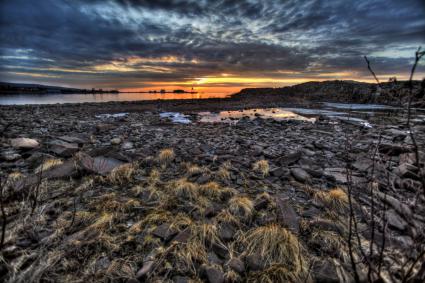North Woods Naturalist


Arts, cultural and history features on WTIP are made possible in part by funding from the Minnesota Arts and Cultural Heritage Fund. Check out other programs and features funded in part with support from the Heritage Fund.
Buds, birds and drumming grouse signal spring
-| Attachment | Size |
|---|---|
| ChelSpring4Feeders030210Mixdown.mp3 | 8.8 MB |
Catkins, tiny flowers and sweet smelling Balm of Gilead are all strong signs that spring is on the way. WTIPs Jay Andersen talks with a local phenologist about changes in familiar shrubs, activity at the bird feeder and drumming grouse.
Feeder birds and chasing squirrels – spring is here
-| Attachment | Size |
|---|---|
| ChelSpring4Feeders030210Mixdown.mp3 | 8.8 MB |
Things are changing at and under the bird feeders. Some birds are arriving, some leaving, some changing color. Then, of course there are the red squirrels with their stunning aerial acrobatics. WTIPs Jay Andersen talks with a local phenologist about goings on at the feeder.
Familiar clues for tree tappers and wolves begin to court
-| Attachment | Size |
|---|---|
| ChelSpring3WellsWolves030210Mixdown.mp3 | 7.32 MB |
We can’t feel it, but trees give off energy that melts the snow from their bases, creating tree wells. Early spring is also time for wolf mating. WTIP's Jay Andersen talks with local phenologist Chel Anderson about tree wells and courting wolves.
Aspen sunscreen and color changes in trees with Chel Anderson
-| Attachment | Size |
|---|---|
| ChelSpring2Trees030210Mixdown.mp3 | 8.64 MB |
As spring approaches we begin to notice subtle changing colors on the hillsides and along roadways. Trees and shrubs are responding to the longer days. WTIP's Jay Andersen talks with a local phenologist Chel Anderson about aspen sunscreen and chemistry in trees.
In late winter the land warms, but the big lake ices up
-| Attachment | Size |
|---|---|
| ChelSpring1_030110Mixdown.mp3 | 11.31 MB |
Why does the North Shore seem warmer this winter? Temperatures in February were some of the highest in the state. If that’s the case, why is there so much ice out on Lake Superior? WTIP’s Jay Andersen talks with Chel Anderson, a local phenologist, about the interesting ins and outs of late winter and early spring.
In winter plants may be dormant, but their chemistry works overtime
-| Attachment | Size |
|---|---|
| Dormancy021510Mixdown.mp3 | 10.19 MB |
We all know animals have various ways of dealing with winter. Some hibernate; some stay active under the snow. Much the same is true for seeds and plants. It’s called dormancy and it has a lot to do with chemical changes, both in the plants and in the rodents that eat the plants. WTIP’s Jay Andersen spoke with a local phenologist about the dormant plant world under the snow.
The winter world beneath our feet
-| Attachment | Size |
|---|---|
| UnderSnow_0216.mp3 | 9.16 MB |
While most of us are skiing, snowmobiling and snowshoeing on top of the snow, there’s a whole world of activity under our feet. This is the subnivean environment. Small rodents and some insects live in this very special place – and the snow below can be a lot different from the snow on top. Jay Andersen spoke with a local phenologist Chel Anderson about the mysteries and activities of the subnivean world.
Hooo’s hooting? It’s owl courtship season
-| Attachment | Size |
|---|---|
| 021110OwlsMixdown.mp3 | 9.14 MB |
If you’re out in the woods these days you may be hearing the sounds of courtship. At least two species of owl are getting romantic for the Valentine season. WTIP’s Jay Andersen spoke with a local phenologist about who’s doing the hooting.
Snow fleas have an important ecological function
-| Attachment | Size |
|---|---|
| 020810SnowFleasMixdown.mp3 | 7.5 MB |
Now that we have some fresh snow, you might be seeing little spots of stuff that looks like pepper. If the spots jump around they’re more than likely snow fleas. WTIP’s Jay Andersen talks with phenologist Chel Anderson about these fascinating wintertime insects.




